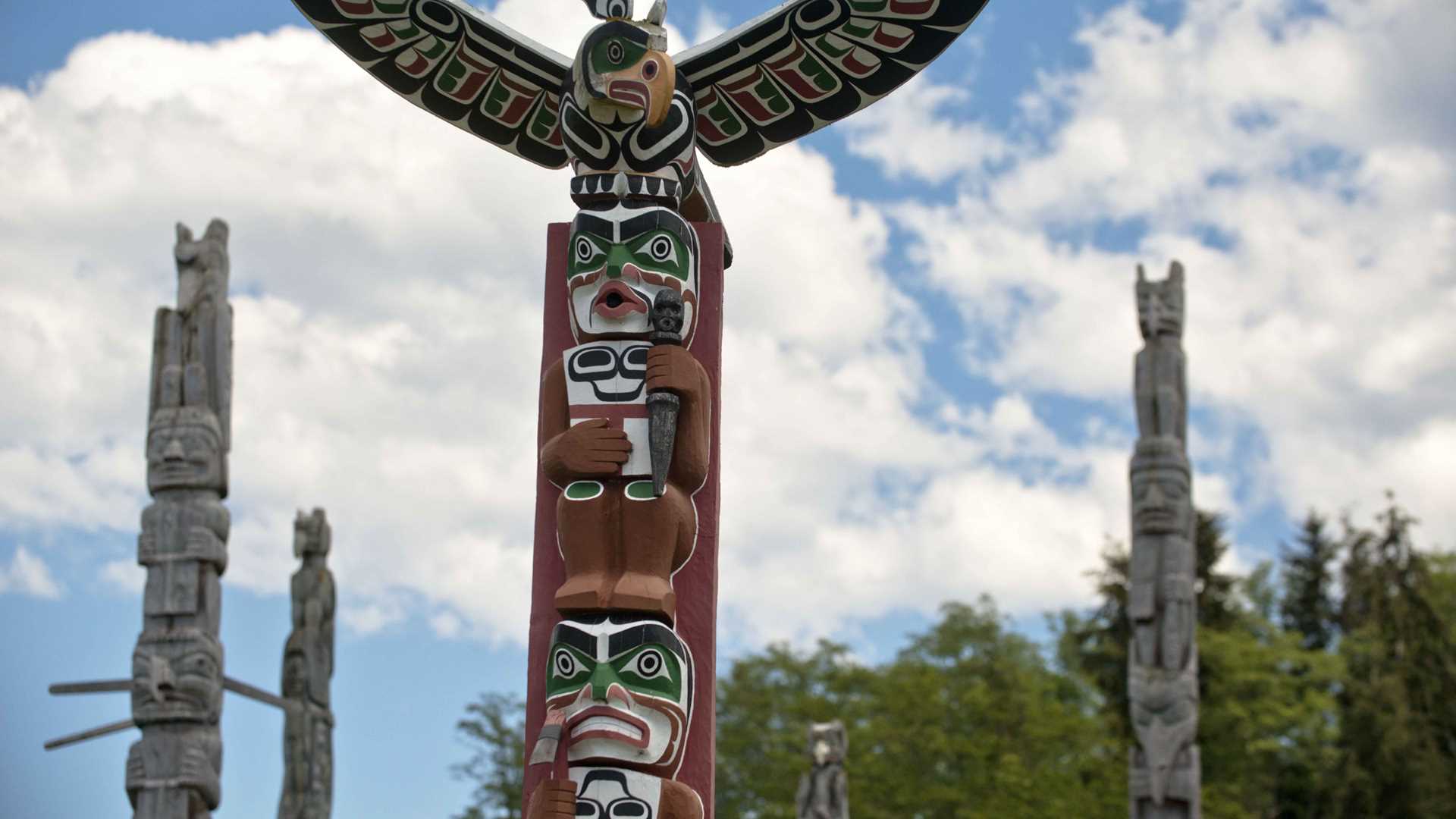Skies remained clear, gliding from star-filled to a soft, pink then the bright yellow of a spectacular sunrise. The National Geographic Sea Bird was cruising in the Broughton Archipelago in Johnstone Straight. The coastal range on the mainland of British Columbia was silhouetted in sunrise light, while to the west, the mountains of Vancouver Island were bright with morning light. In very calm conditions we made our way deeper into a network of islands heading for our morning destination of Village Island. Staff remained on the bow looking for wildlife while many of us relaxed on the sunny decks of the National Geographic Sea Bird. Soon an announcement from the bow was made: dolphins near the ship! Everyone made their way to the bow as a small group of Pacific white sided dolphins cruised in to see what and who was making all the noise. Cruising along side and then under the National Geographic Sea Bird, this group continued to play on the edge of our wake and then turn heading away.
A short distance ahead our ship made a slow 90 degree turn at approximately 8:30am positioning us straight towards an opening facing a beach that for generations was a landing site for canoes that would visit this well-known island. Village Island has been a stronghold and traditional village site for the Kwakwaka’wakw people for many, many generations.
Our entire day would be spent in Kwakwaka’wakw territory and to begin our day in this old village site was just the beginning of a circle that would bring everyone on the National Geographic Sea Bird through the past and today and into the future. After honoring the ancestors of this ancient village site with a blessing way and having our elder and guest drop a very old trade bead into the sea…our Captain slowly pulled away and turned the National Geographic Sea Bird around heading back towards Cormorant Island and Alert Bay where we would spend the rest of our day. At approximately 12:30pm our ship and gangway were made ready for disembarkation from the Government dock located in the center of Alert Bay. Lovely large clouds were beginning to fill the sky and for those of us interested there was a chance to photograph the original ‘Namgis Burial Grounds. Old and new totems standing together wonderfully lit in sunlight with a backdrop of huge white clouds. Walking back and forth many a guest with camera enjoyed our first photographs in Alert Bay. Gathering together our group either walked or rode in a van to the U’mista Cultural Center where we would be escorted by Lillian Hunt through one of the finest collections of elaborately carved masks, depicting the Potlatch ceremony of the Kwakwaka’wakw people.
All stops seemed to be leading us to our final destination in Alert Bay and a central focus for many residents of this community; the Big House or Gukwdzi as it is called in Kwakwala. This very large traditional gathering place was truly amazing to approach….the world’s tallest totem pole along with two new poles alongside this spectacularly painted house drew us all towards its entrance. Once inside we were greeted and welcomed by the family chief who spoke in Kwakwala. Elder Vera Newman translated the welcoming and then introduced her daughter Andrea Cranmer, director of the cultural group called T’masala which means to be determined. During the next hour a series of dances from the Cedar Bark and Peace ceremonies were presented. All singers and dancers were young, some experienced, some learning and performing with guidance from more experienced young people and the many aunties who watched with a stern but very loving eye. Our afternoon spent inside the Big House ended with a fun dance where many of us could enjoy a moment on the central floor dancing, smiling and sharing in the gift that had been presented to us. As witnesses we were then fed butterflied and planked sockeye salmon with banoc and homemade jams. In this land of the northwest coast people, we could not enter a Big House, experience a small part of the Potlatch ceremony without, at the very least being fed generously. So, with all protocol followed closely we returned to a glorious sunny afternoon and a walk back to our waiting ship. The balance of a closing circle nearly complete we were just beginning to understand the resilience of culture and the people who are still carrying that responsibility into the future for their children who are indeed the greatest resource of every culture.






